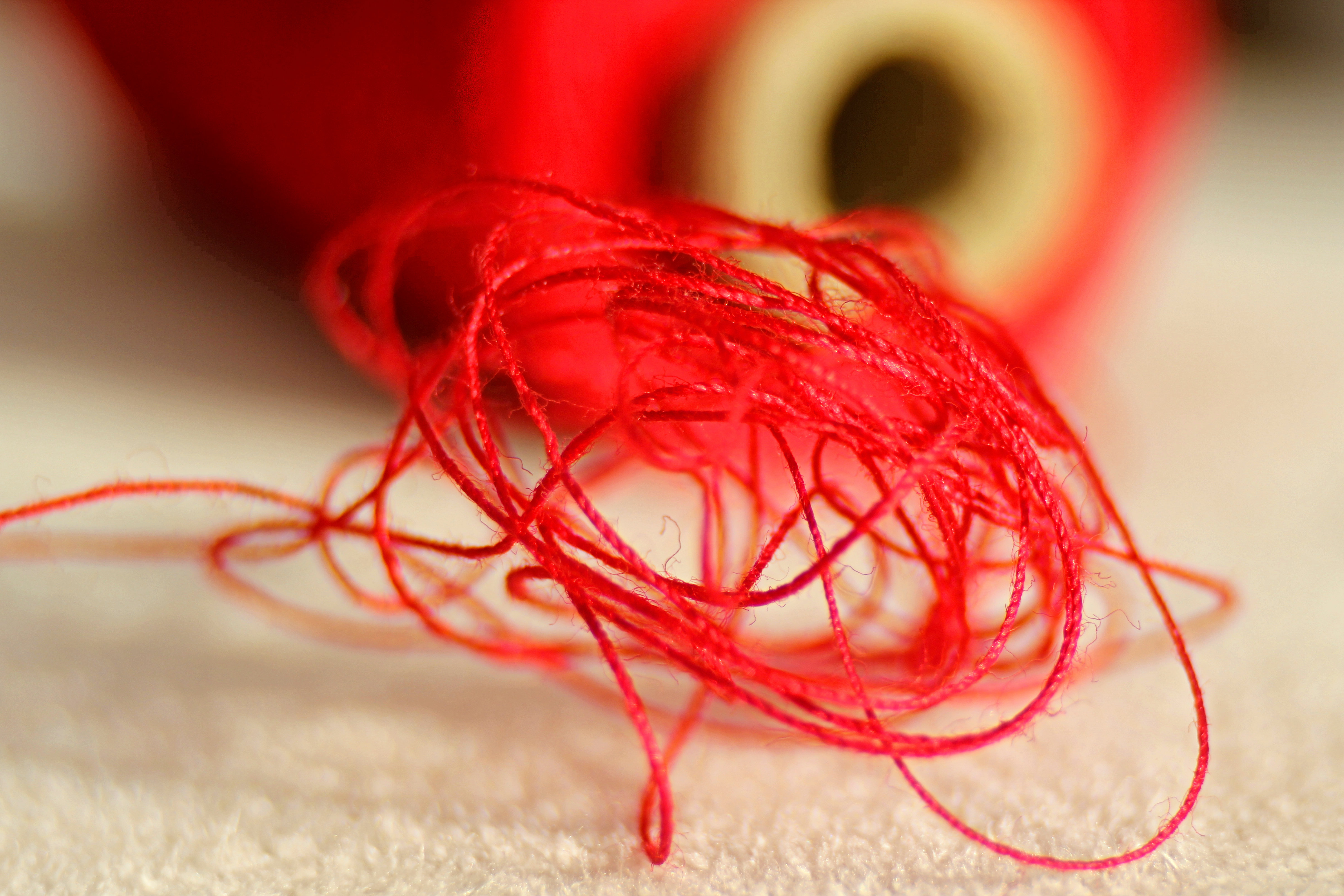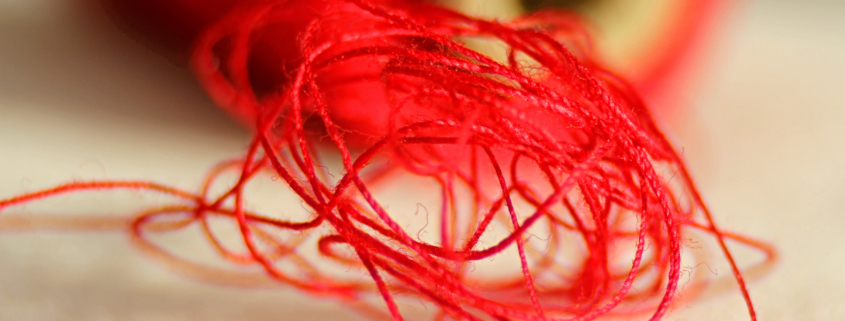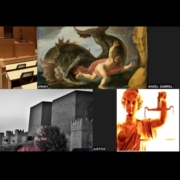Red thread ritual for Yom Kippur

This ritual seeks to connect us with atonement and make us aware of our interconnectedness. The only required element is red thread, cut into discrete lengths (a foot long, all the same length) handed out at the start of the ritual. The ritual begins with a short teaching about the red thread, followed by an activity involving the thread directly. This could be used as a prelude to the Musaf repetition of “Al Chet” (in communities that do Musaf) or as a component in the Avodah service on Yom Kippur afternoon. At the close, there’s an opportunity for people to talk with each other about what the ritual was like and how it impacted them. — Rabbi Evan J. Krame
-
Opening teaching
The red thread is Jewish folk talisman, said to ward off the evil eye. Red thread also appears in the story of Tamar (Genesis 38:28-30), in the story of Rahav (Joshua 2:18), and in association with the Mishkan / Temple rituals and clothing. Red thread can represent the boundary between the sacred and profane; it can also be a symbol of protection and promise. Proverbs (31:21) also mentions the virtuous woman who creates protection for her family with red wool.
Mishnah (Yoma 4:2, 6:8) and Maimonides’ Mishneh Torah also describe how red string was used in the Yom Kippur scapegoat ritual. The high priest would place his hands on the scapegoat, confessing the sins of Israel and asking for atonement. He would tie a red string between the horns of the scapegoat, and another strip around the neck of the second goat to indicate where it should be slaughtered.
-
Red thread
Today we incorporate the red thread into a ritual of acknowledging and atoning for errant behavior.
[Hand out red threads.]
What are some modern sins that might not have been given expression in the classical Al Chet prayer? Let’s name a few of them:
[Harvest responses from the room. Solicit interpersonal / communal answers — damage to the environment, poverty and homelessness, etc.]
Take your red thread and turn to the person next to you. Stand close to one another, each holding an end of the thread, with the thread hanging slack between you. As we acknowledge our failings, each person moves your body in the way I am about to describe. With each expression, take a very short step with your left foot, moving it slightly forward and in front of the right. The second step should bring your left foot fully in front of the right, which will make the red thread more taut. The third step will move the left foot past the right and the string will be stretched.
[Mention three sins]
Now let’s come up with three ways to repair the world and unravel the dynamic that created these broken places. As each possibility for repair is listed, move your foot back, so that we end the exercise in the same posture in which we began:
[With each repair, people will move back to their original places.]
-
(Optional) How did this feel?
Turn now to your partner and speak quietly for a few moments. How did this ritual feel for you? What role did the red thread play in connecting you? What meaning did you find in the position of your bodies relative to one another? Take turns speaking about your experience. We’ll bring everyone back together again with a niggun when it’s time to move on.
*
See also: this beautiful red thread sketchnote by Steve Silbert arising out of this ritual!










Very cool. It’s engaging, special, alive, and inclusive.
Thank you R. Evan!
May you enjoy bringing joy and healing to people, in 5780 and beyond the beyond!